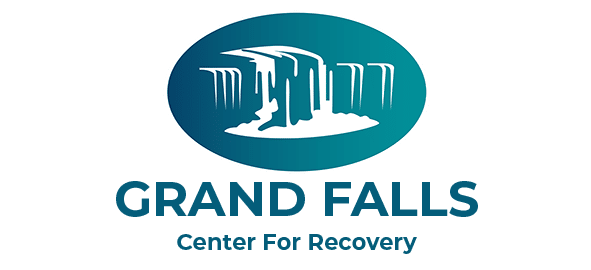Dual diagnosis, also known as co-occurring disorders, refers to the presence of both a mental health condition and a substance use disorder in an individual. This overlap can present unique challenges in treatment, as one condition often influences the other. However, with the right strategies, individuals facing dual diagnoses can achieve recovery and regain control of their lives.
Understanding dual diagnosis begins with recognizing the specific examples and exploring the most effective treatments. Below, we discuss six common examples of co-occurring disorders and their corresponding treatment strategies.
Depression and Alcohol Use Disorder
People with depression may turn to alcohol as a way to cope with persistent feelings of sadness, fatigue, or hopelessness. Unfortunately, alcohol is a depressant itself, which can worsen depressive symptoms over time, creating a vicious cycle.
Treatment Strategy
Integrated treatment is critical in addressing both depression and alcohol use. Cognitive Behavioral Therapy (CBT) is effective for managing depressive thoughts while behavioral interventions, such as motivational interviewing, help individuals reduce or stop alcohol use. Additionally, medication like antidepressants can be beneficial, but it should always be prescribed alongside support for alcohol dependency.
Anxiety Disorders and Prescription Drug Misuse
Anxiety disorders, including generalized anxiety disorder (GAD) and panic disorder, are commonly linked with prescription drug misuse. Medications like benzodiazepines may be initially prescribed to alleviate symptoms, but their high potential for dependency can lead to misuse.
Treatment Strategy
For dual diagnosis cases involving anxiety and prescription drug misuse, a combination of evidence-based therapies like CBT and Acceptance and Commitment Therapy (ACT) is recommended. These methods help individuals understand their triggers and learn healthier coping mechanisms. Alternatives to benzodiazepines, such as non-addictive medications or natural relaxation techniques, should also be explored.
Bipolar Disorder and Stimulant Addiction
Bipolar disorder is characterized by extreme mood swings, including depressive and manic episodes. Some individuals may misuse stimulants such as cocaine or ADHD medications during depressive episodes to regain energy or focus. However, these substances often exacerbate the instability of bipolar symptoms.
Treatment Strategy
Treating bipolar disorder alongside stimulant addiction requires a delicate balance. Mood-stabilizing medications are often central to managing bipolar symptoms, while therapies like Dialectical Behavior Therapy (DBT) can help individuals develop emotional regulation skills. It’s also important to address stimulant use through abstinence-based programs and consistent relapse prevention strategies.
Post-Traumatic Stress Disorder (PTSD) and Opioid Abuse
Trauma survivors living with PTSD may turn to opioids to numb the emotional and physical pain associated with their condition. Over time, this reliance can spiral into opioid abuse.
Treatment Strategy
To manage PTSD and opioid abuse, trauma-focused therapies such as Eye Movement Desensitization and Reprocessing (EMDR) or Prolonged Exposure Therapy (PE) can be incredibly effective. These therapies help individuals process trauma in a safe, structured way. Alongside therapy, medication-assisted treatment (MAT) with drugs like buprenorphine or methadone can support the detox process and reduce cravings.
Schizophrenia and Cannabis Use
Research suggests that individuals with schizophrenia may use cannabis to cope with their symptoms or side effects of antipsychotic medications. However, cannabis use can worsen psychotic symptoms and increase the risk of relapse.
Treatment Strategy
For schizophrenia and cannabis use, antipsychotic medications must be prescribed consistently to manage psychotic symptoms. Concurrently, motivational enhancement therapy (MET) and family therapy can help address cannabis use while providing a support system to prevent relapse. Education about the risks of cannabis use is also a critical part of treatment.
Eating Disorders and Alcohol Use
Eating disorders such as anorexia or bulimia often co-occur with alcohol use disorders. For many, alcohol serves as a coping mechanism to manage feelings of guilt, shame, or low self-esteem tied to their eating disorder.
Treatment Strategy
Holistic treatment for these co-occurring disorders includes nutritional therapy and specialized psychotherapy like CBT-E (Enhanced Cognitive Behavioral Therapy), which is designed for eating disorders. Alcohol abuse should be treated simultaneously, often through support groups or individualized counseling to address underlying triggers.
Taking the First Step
Dual diagnosis presents unique challenges, but it’s essential to understand that recovery is possible with the right approach. Integrated care—addressing both the substance use disorder and the co-occurring mental health condition—is the gold standard for lasting recovery. This approach ensures that individuals receive tailored support, minimizing the chances of relapse and fostering a healthier future.
If you or a loved one is struggling, the team at Grand Falls Recovery Center is here to help. Our experienced professionals specialize in creating personalized, compassionate care plans that tackle the complexities of dual diagnosis. Reach out to us today to take the first step toward a brighter future.

